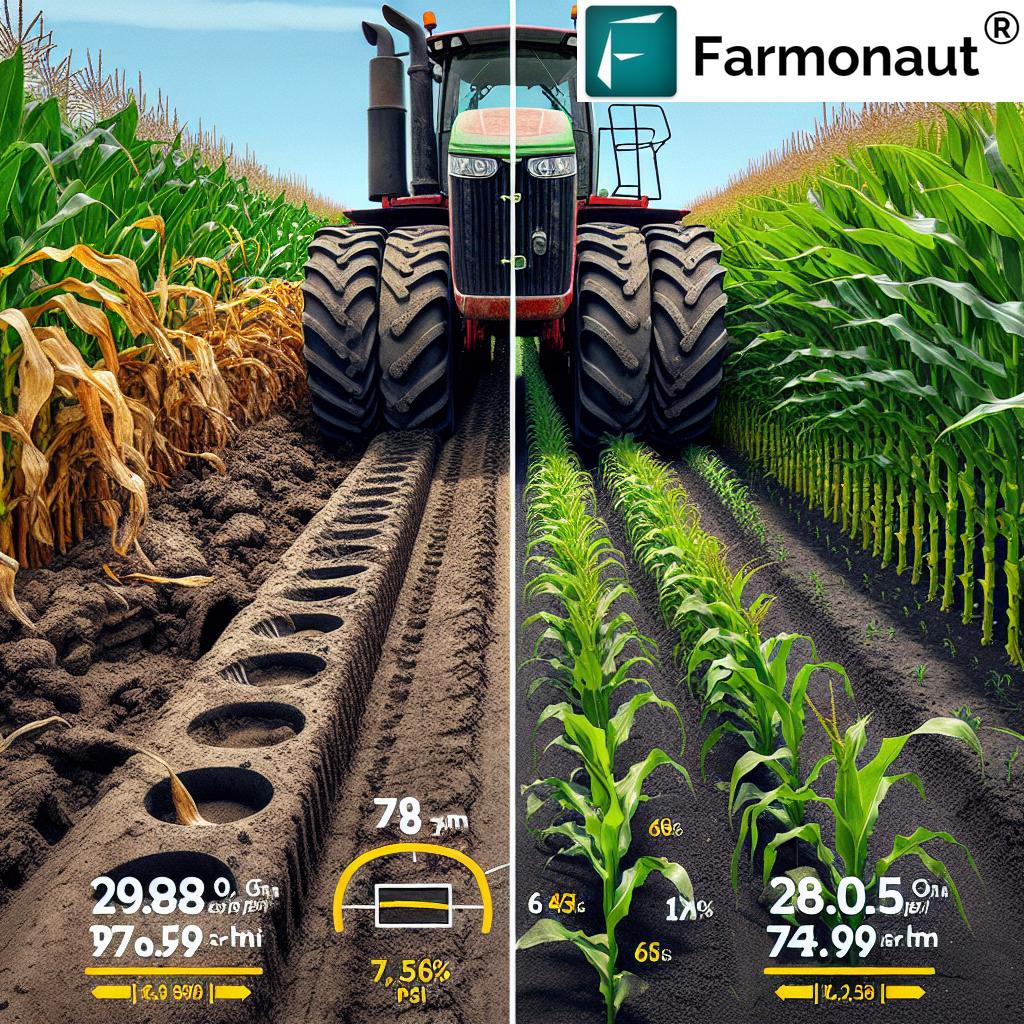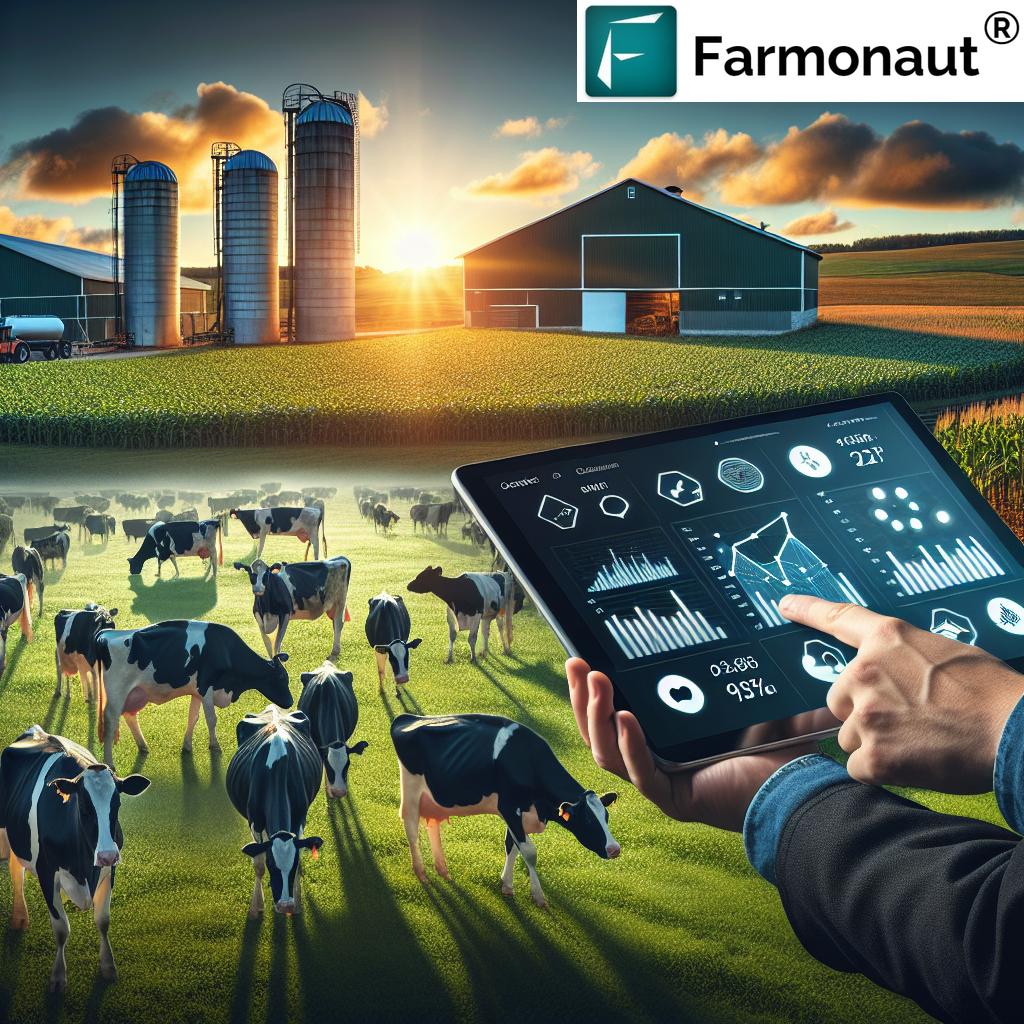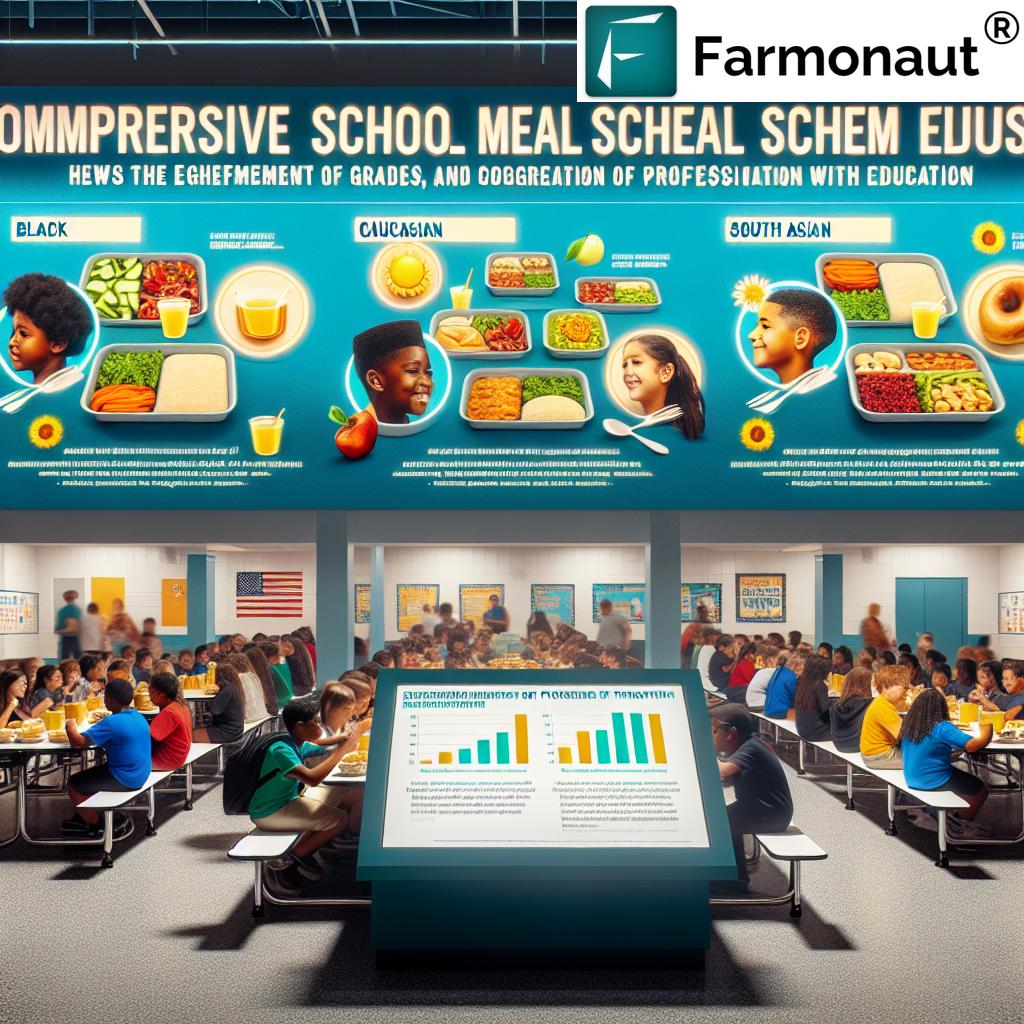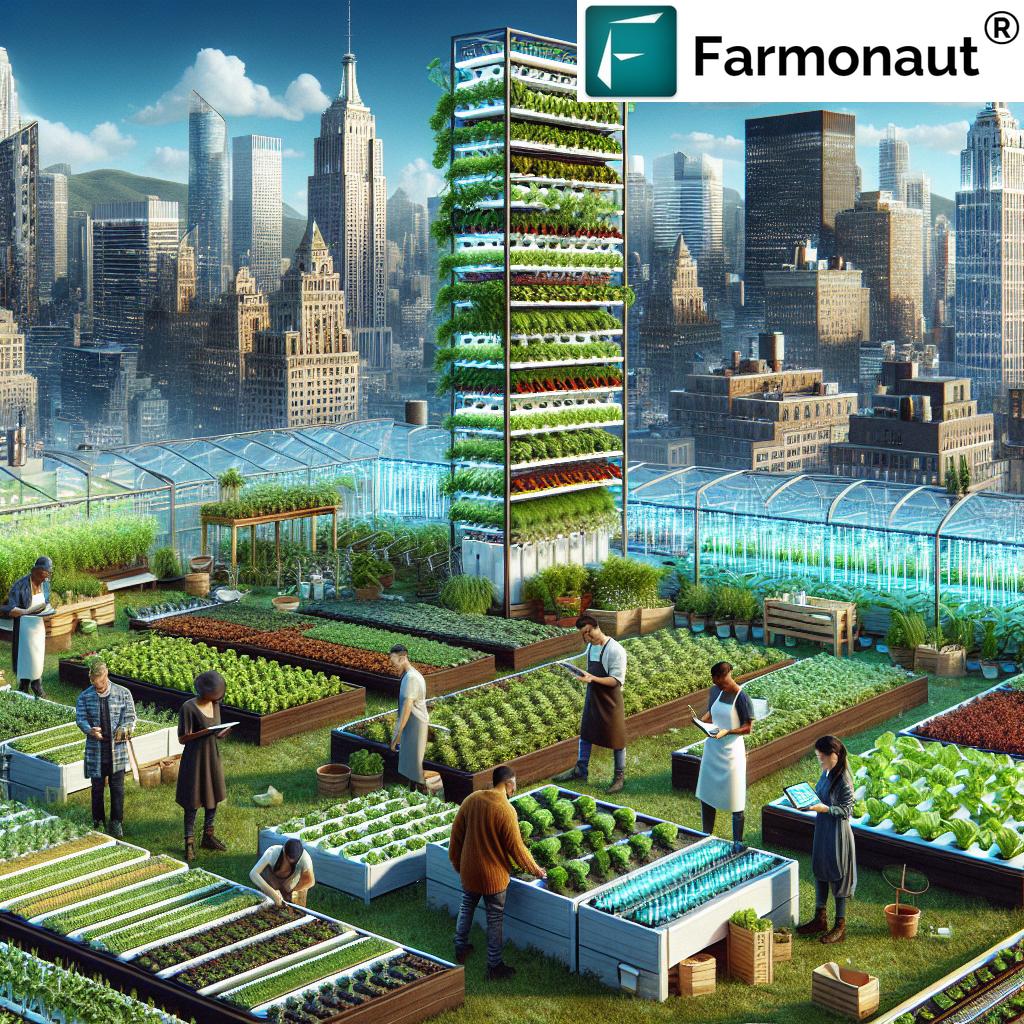Unveiling the Impact: How Tire Pressure Affects Crop Yield and Soil Health in North Dakota Farms

“Studies show that optimizing tire pressure can increase crop yield by up to 15% through reduced soil compaction.”
In the vast agricultural landscapes of North Dakota, a seemingly small factor is making a big impact on crop yields and soil health: tire pressure. As we delve into the intricate relationship between agricultural machinery and the soil beneath it, we uncover surprising connections that are reshaping modern farming practices. Join us as we explore how the simple act of adjusting tire pressure can lead to significant improvements in crop growth, soil conservation, and overall farm productivity.
The Hidden Impact of Soil Compaction in Agriculture
Soil compaction is a silent threat that has been plaguing farms across North Dakota and beyond. As heavy agricultural machinery traverses fields, it can compress the soil, leading to a host of problems that directly affect crop health and yield. Let’s break down the key issues:
- Reduced Water Infiltration: Compacted soil doesn’t absorb water as effectively, leading to increased runoff and reduced moisture availability for crops.
- Poor Root Development: Compressed soil particles make it difficult for plant roots to penetrate deeply, limiting their access to nutrients and water.
- Decreased Aeration: Compaction reduces the air pockets in soil, which are crucial for root respiration and beneficial microbial activity.
- Nutrient Deficiencies: With limited root growth and poor soil structure, plants struggle to uptake essential nutrients, even when they’re present in the soil.
These factors combine to create a challenging environment for crops, ultimately resulting in stunted growth and reduced yields. However, recent research has shed light on an unexpected solution: optimizing tire pressure on agricultural machinery.
Tire Pressure Effects on Crop Yield: A Game-Changing Discovery
Our team at Farmonaut has been closely following the latest research on tire pressure effects on crop yield, and the results are nothing short of remarkable. A comprehensive study conducted in North Dakota’s Casselton region has revealed a direct correlation between tire inflation rates and plant height, soil compaction, and ultimately, crop yield.

Here’s what the study found:
- Larger Footprints, Less Compaction: Lower tire pressures create larger tire footprints, distributing the weight of machinery more evenly across the field surface.
- Improved Soil Structure: Reduced compaction leads to better soil structure, allowing for improved water infiltration and root penetration.
- Enhanced Nutrient Uptake: With a healthier soil environment, crops showed significant improvements in nutrient uptake efficiency.
- Increased Plant Height: Corn plants in plots with optimized tire pressure grew taller and stronger compared to those in high-pressure tire plots.
- Higher Yields: The cumulative effect of these improvements resulted in measurably higher crop yields across various treatment plots.
These findings have far-reaching implications for farmers in North Dakota and beyond, offering a relatively simple yet highly effective method for improving crop performance and soil health.
The Science Behind Tire Pressure and Soil Compaction
To truly appreciate the impact of tire pressure on soil health, it’s essential to understand the mechanics at play. When a tire rolls over soil, it exerts pressure that can compress soil particles. The amount of compaction depends on several factors:
- Tire Inflation Pressure: Higher PSI (pounds per square inch) concentrates the weight of the machine into a smaller contact area.
- Total Machine Weight: Heavier equipment naturally increases the risk of soil compaction.
- Soil Moisture Content: Wet soils are more susceptible to compaction than dry soils.
- Soil Type: Different soil textures respond differently to pressure, with some being more prone to compaction than others.
By lowering tire pressure, we effectively increase the tire’s footprint on the ground. This larger surface area distributes the machine’s weight more evenly, reducing the pressure exerted on any given point of soil contact. The result is a significant reduction in soil compaction, particularly in the critical topsoil layer where most plant roots develop.
Optimizing Tire Pressure for Crop Growth: Practical Implications
For farmers looking to implement these findings, there are several practical considerations to keep in mind:
- Field Operations vs. Transport: Tire pressure should be adjusted based on the task at hand. Lower pressures are ideal for in-field operations, while higher pressures may be necessary for road transport.
- Equipment Type: Different machinery may require different optimal tire pressures. Consult manufacturer guidelines and consider the specific needs of planters, harvesters, and other equipment.
- Soil Conditions: Adjust tire pressure based on soil moisture levels and types to maximize the benefits and minimize potential damage.
- Tire Technology: Consider investing in modern tire technologies such as VF (Very High Flexion) tires, which can operate at lower pressures without compromising durability.
Implementing these strategies can lead to substantial improvements in soil health and crop productivity. However, it’s crucial to approach tire pressure management as part of a holistic soil conservation strategy.
Integrating Tire Pressure Management with Modern Farming Practices
At Farmonaut, we believe in leveraging technology to enhance traditional farming methods. Our satellite-based crop monitoring system can be a valuable tool in assessing the impact of tire pressure adjustments on overall field health. By providing real-time data on crop vigor and soil moisture levels, we can help farmers fine-tune their tire pressure strategies for optimal results.
Additionally, our AI-powered advisory system, Jeevn AI, can offer personalized recommendations on tire pressure management based on specific field conditions and equipment types. This integration of data-driven insights with practical tire pressure solutions represents the future of sustainable agriculture.
The Role of Agricultural Tire Technology in Soil Conservation
As we continue to explore the relationship between tire pressure and soil health, it’s important to highlight the advancements in agricultural tire technology that are making a significant impact:
- IF (Increased Flexion) and VF (Very High Flexion) Tires: These modern tire designs allow for lower inflation pressures without sacrificing load capacity, providing excellent soil protection.
- Central Tire Inflation Systems (CTIS): These systems allow operators to adjust tire pressures on the go, optimizing for both field work and road transport.
- Radial vs. Bias Tires: Radial tires generally offer better flotation and reduced soil compaction compared to traditional bias tires.
- Track Systems: In some cases, replacing wheels with track systems can further reduce ground pressure and soil compaction.
By adopting these technologies, farmers in North Dakota and beyond can significantly reduce their impact on soil health while improving overall farm productivity.
“Lowering tire PSI by just 10-15% can expand the tire footprint by 20%, significantly improving weight distribution in fields.”
Comparative Analysis: Tire Pressure Effects on Soil and Crop Health
To better illustrate the impact of tire pressure on various agricultural factors, we’ve compiled a comprehensive table based on research findings:
| Tire Pressure (PSI) | Soil Compaction Level | Crop Yield (%) | Plant Height (%) | Nutrient Uptake Efficiency (%) | Water Absorption Rate (%) | Tire Footprint Size (sq. in) |
|---|---|---|---|---|---|---|
| 6-10 (Very Low) | Minimal | 105-110 | 103-108 | 105-110 | 110-115 | 400-450 |
| 11-15 (Low) | Low | 100-105 | 100-103 | 100-105 | 105-110 | 350-400 |
| 16-20 (Medium) | Moderate | 95-100 | 98-100 | 95-100 | 100-105 | 300-350 |
| 21-25 (High) | High | 90-95 | 95-98 | 90-95 | 95-100 | 250-300 |
| 26+ (Very High) | Severe | 85-90 | 90-95 | 85-90 | 90-95 | 200-250 |
This table clearly demonstrates the inverse relationship between tire pressure and various agricultural metrics. As tire pressure decreases, we see improvements across the board in crop yield, plant height, nutrient uptake, and water absorption, all while reducing soil compaction.
Implementing Tire Pressure Management in North Dakota Farms
For farmers in North Dakota looking to implement these findings, we recommend the following steps:
- Assess Current Equipment: Evaluate your existing machinery and tire types to determine the potential for pressure adjustments.
- Consult Manufacturers: Work with equipment and tire manufacturers to understand the safe operating ranges for your specific setup.
- Invest in Monitoring Tools: Consider purchasing tire pressure monitoring systems to easily track and adjust pressures as needed.
- Train Operators: Educate farm staff on the importance of tire pressure management and proper adjustment techniques.
- Monitor and Adjust: Regularly check tire pressures and adjust based on field conditions and planned operations.
- Track Results: Use precision agriculture tools, like Farmonaut’s satellite monitoring system, to measure the impact of your tire pressure management strategies on crop health and yield.
By following these steps, North Dakota farmers can take advantage of the latest research to improve their soil health and crop yields through optimized tire pressure management.
The Broader Impact: Beyond Crop Yield
While the immediate benefits of optimized tire pressure on crop yield are clear, it’s important to consider the broader, long-term impacts of this practice:
- Soil Health: Reduced compaction leads to improved soil structure, better water retention, and increased microbial activity, all of which contribute to long-term soil health.
- Environmental Benefits: Improved water infiltration reduces runoff, which can help prevent soil erosion and nutrient leaching into waterways.
- Fuel Efficiency: Properly inflated tires can improve fuel efficiency, reducing both costs and carbon emissions.
- Equipment Longevity: Correct tire pressure can extend the life of both tires and machinery, reducing replacement costs over time.
- Sustainable Agriculture: By promoting healthier soils and more efficient resource use, optimized tire pressure contributes to more sustainable farming practices.
These wide-ranging benefits underscore the importance of tire pressure management as a key component of modern, sustainable agriculture.
Integrating Tire Pressure Management with Precision Agriculture
At Farmonaut, we see tire pressure optimization as a crucial part of the broader precision agriculture movement. By combining tire pressure management with other advanced farming techniques, farmers can achieve even greater results:
- Variable Rate Technology (VRT): Adjust tire pressures based on specific zones within a field, accounting for variations in soil type and moisture content.
- GPS-Guided Systems: Use GPS technology to create consistent traffic patterns, minimizing the total area subjected to compaction.
- Remote Sensing: Utilize satellite imagery and drone technology to identify areas of potential compaction and monitor the effects of tire pressure adjustments over time.
- Data Analytics: Leverage big data and AI to analyze the relationship between tire pressure, soil conditions, and crop performance, continually refining management strategies.
By integrating these technologies, farmers can create a comprehensive approach to soil health and crop management that maximizes the benefits of optimized tire pressure.
The Future of Tire Pressure Management in Agriculture
As we look to the future, several exciting developments are on the horizon that could further revolutionize tire pressure management in agriculture:
- Automated Tire Pressure Systems: Advanced systems that automatically adjust tire pressure based on real-time soil conditions and operational requirements.
- Smart Tires: Tires equipped with sensors that can monitor and report on soil conditions, pressure, and performance in real-time.
- AI-Driven Recommendations: Artificial intelligence systems that can predict optimal tire pressures based on a multitude of factors, including weather forecasts, crop types, and soil maps.
- Integration with Autonomous Vehicles: As autonomous farm equipment becomes more prevalent, tire pressure management will likely be integrated into these systems for optimal performance.
These advancements promise to make tire pressure optimization even more precise and effortless for farmers, further enhancing the benefits to soil health and crop yield.
Conclusion: A Small Change with Big Impact
As we’ve explored throughout this article, the impact of tire pressure on crop yield and soil health is far more significant than many farmers realize. From improved nutrient uptake to increased water absorption, the benefits of optimized tire pressure touch every aspect of agricultural production.
For farmers in North Dakota and beyond, implementing a tire pressure management strategy represents a relatively simple yet highly effective way to improve soil health, increase crop yields, and promote sustainable farming practices. By combining this approach with other precision agriculture techniques and leveraging advanced technologies like those offered by Farmonaut, farmers can position themselves at the forefront of modern, efficient, and environmentally responsible agriculture.
As we continue to face challenges such as climate change, soil degradation, and the need for increased food production, innovations like optimized tire pressure management will play a crucial role in shaping the future of farming. By paying attention to these seemingly small details, we can make a big difference in the health of our soils, the productivity of our farms, and the sustainability of our agricultural systems.
FAQs
- Q: How often should I check and adjust tire pressure on my farm equipment?
A: It’s recommended to check tire pressure at least weekly during active farming seasons, and adjust as needed based on planned operations and field conditions. - Q: Can tire pressure adjustments really make a significant difference in crop yield?
A: Yes, studies have shown that optimizing tire pressure can increase crop yields by up to 15% through reduced soil compaction and improved soil health. - Q: Are there any risks associated with running tires at lower pressures?
A: While lower pressures can benefit soil health, running tires below manufacturer recommendations can lead to increased wear and potential damage. Always consult your equipment manual and tire manufacturer guidelines. - Q: How does Farmonaut’s technology complement tire pressure management strategies?
A: Farmonaut’s satellite-based crop monitoring and AI advisory systems can help farmers track the impact of tire pressure adjustments on crop health and yield, allowing for data-driven decision-making and optimization. - Q: Is tire pressure management equally important for all types of crops?
A: While all crops can benefit from reduced soil compaction, row crops like corn and soybeans tend to show the most significant improvements from optimized tire pressure management.
By addressing these common questions, we hope to provide clarity and encourage more farmers to adopt tire pressure management as part of their soil conservation and crop yield optimization strategies.
For more information on how Farmonaut’s satellite-based crop monitoring and AI advisory systems can help you optimize your farming practices, including tire pressure management, visit our website or download our mobile app today.
Explore Farmonaut’s Solutions:
















